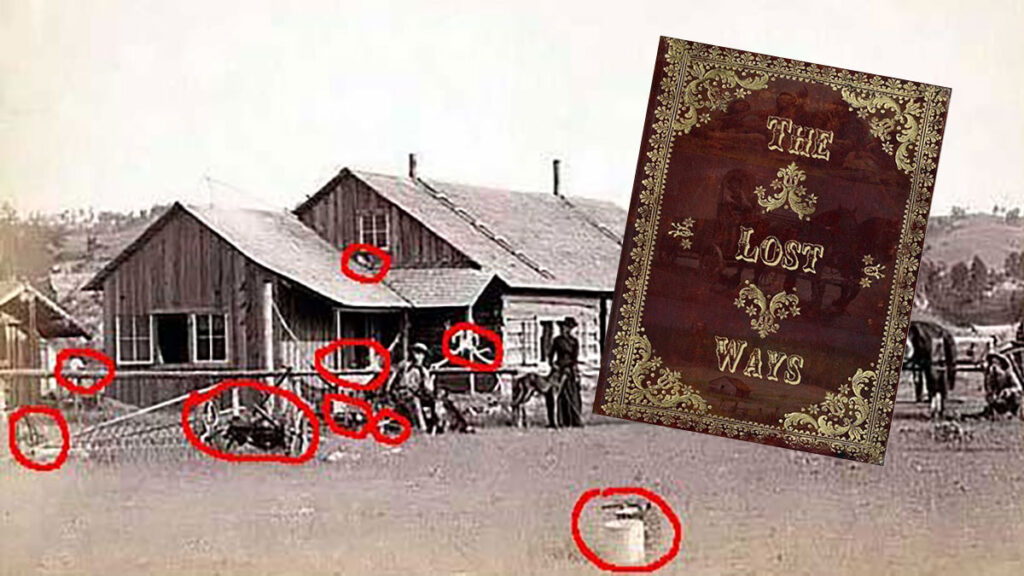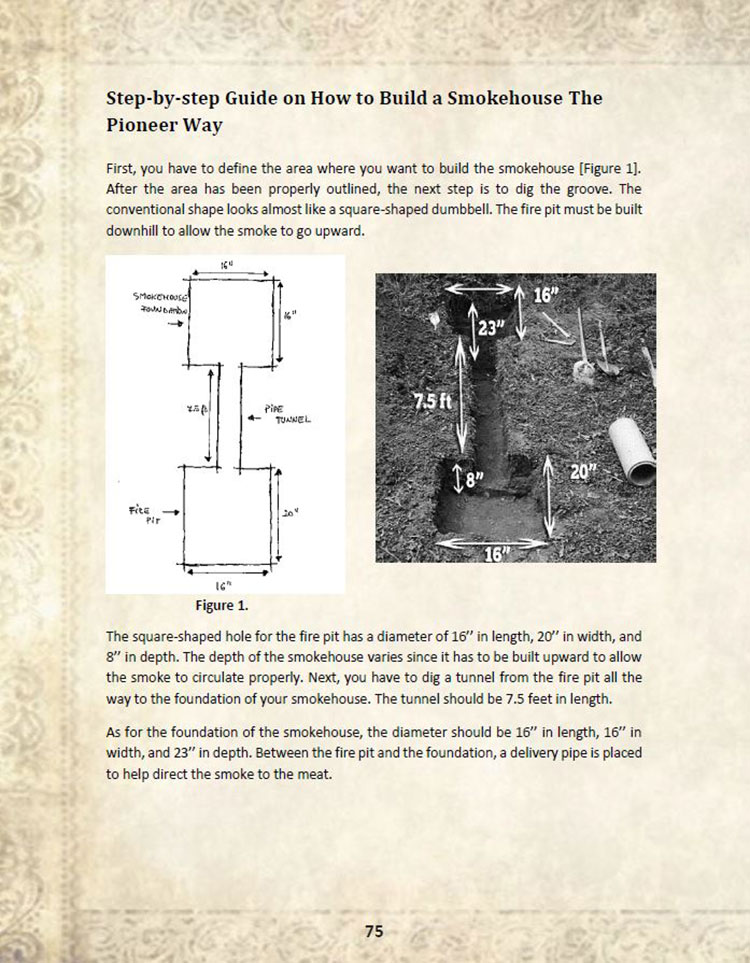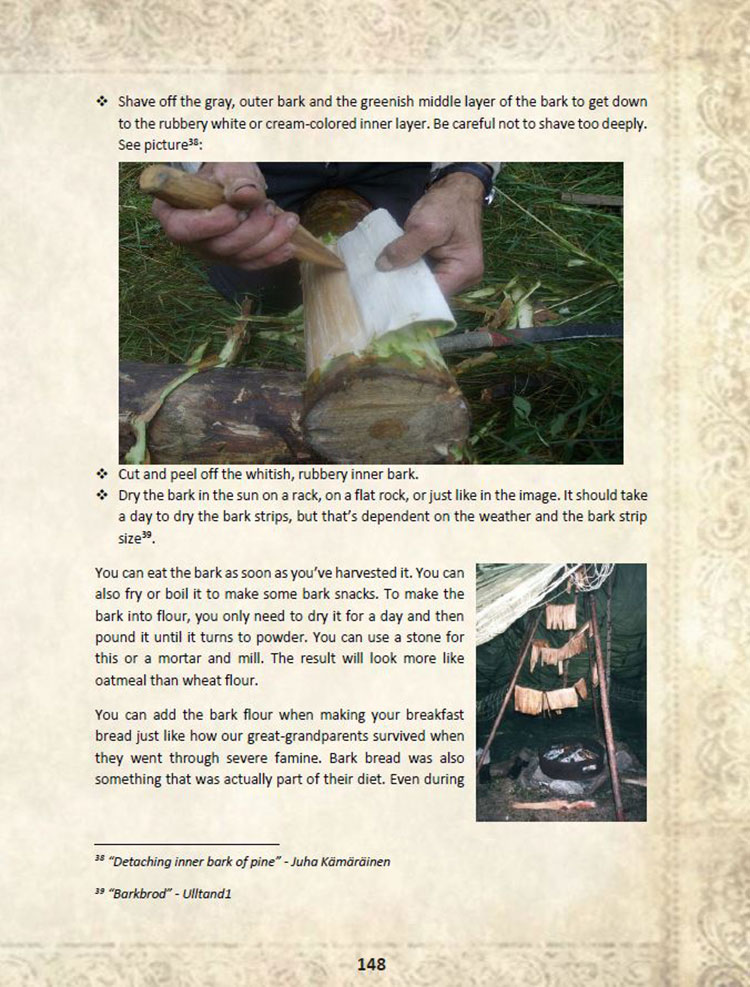
How can we at SHTF Blog claim to offer a The Lost Ways review in an unbiased way? Because we connect the lessons therein to our own lives, not to some greater vision of survival in general. That’s how the book should be read. Humor us:
Imagine you’re ten years old, it’s the early 80s, and you and your family live off the grid as gardeners and homesteaders. It’s a sunny summer afternoon, and you happen to walk through the wrong copse of trees and pick up three bees on your right arm. They sting. It hurts.
You run blubbering back to your father’s cabin, where your stepmother receives you, sees your stings, and immediately mixes a paste of baking soda and water to place upon your beestings. This rudimentary “poultice” soothes the pain, cooling away the bees’ poison as it dries. By the time the baking soda dries and crumbles off, you’re ready to go adventuring outdoors again, fear of insects forgotten.
What other home remedies does your stepmother know? How long have they been passed down through the generations? If you don’t learn them yourself, how can you be expected to be self-sufficient?
These and other questions were brought to my mind when, after seeing multiple ads and reviews for Claude Davis’s book The Lost Ways, I decided to read the book and write my unbiased review.
Start with poultices, for example. Who knew that they were generally warmed and had bread and milk as their base? And who knew that the Native Americans were so well-versed in poultices that they even had one for abscesses? These questions and their answers comprise only a small part of what The Lost Ways covers for material.
What Is The Lost Ways Book?
The Fifth Edition is a three-hundred page book dedicated to “all the pioneers who overcame the toughest times and built one of the greatest nations of all.“
Each chapter is penned by one of about a dozen authors, but the book is credited to Claude Davis, ostensibly because he was responsible for bringing these authors together for a common purpose: creating a manual that imagines a world after a cataclysmic event that forces us Americans to go back to doing things the pioneer way: without electricity, gas-fueled machinery, or access to mass-produced food and medicine. As preppers, we understand and appreciate this viewpoint.
I’ll also say, even if you consider yourself well-versed in survival matters, The Lost Ways is guaranteed to touch on subjects you may be cloudy or vague about. Everything from building a smokehouse to trapping beaver and muskrat is covered, with simple diagrams, interesting exposition, and an eye toward helping you not only survive but thrive in a SHTF situation with your family.
The Lost Ways Review: What I Liked
In the most general terms, I really enjoyed how the book brings the reader back to before the Industrial Revolution, back to truly pioneering days. As I read through The Lost Ways, I was intermittently struck with “Aha” moments.
Like the chapter on building a smokehouse: I never knew before reading this that the firepit was separate and distinct from the “house” where you’d hang your meat to be smoked, and that the smoke traveled through an underground tunnel from the fire to the meat. A slight upward incline in the tunnel is all you need to make sure the smoke permeates the meat hung in the upper building. Imagine if, post-disaster, I tried to build a smokehouse with a fire on the floor directly below the meats! I’d be out a lot of resources from that mistake.

Another example of the pioneer way of doing things is the chapter on how to “Wildcraft Your Table” by Theresa Anne DeMario. In this section of the book, she details specifically what wild plants (often ones considered weeds) can be harvested, cooked, and eaten to great beneficial effect. For example, you may have been aware that dandelion greens are edible if cooked the right way.
After reading DeMario’s words, you’ll know how to use arrowroot tubers as potato substitutes, where to look for the painkilling wild lettuce, and a smattering of other wild stems, roots, leaves, and flowers (with pictures of each one) that you can supplement your food supply with. Like watercress: yes, it can be the filler in a fancy English sandwich. But it’s also full of nutrients and healthy enough to pick from the riverbank and add directly to your salad!

In a similar chapter, James Walton gives a number of pioneer recipes like “Scrambled Dinner” and “Beans and Hamhocks,” among many others that make specific use of the most basic ingredients, for those times when a household finds it necessary to use what’s on hand. You won’t find any processed foods in this recipe list. You’ll see how to use what are called the “staples” to make meals that are tasty enough so that you thought they came from a restaurant, not a meager, make-do list of ingredients.
Another chapter I liked was the one on trapping muskrat and beaver. (Who knew a beaver could grow as large as 90 or 100 pounds?) The author, S. Patrick, tells how to find colonies of beaver by the piles of stripped bark they leave behind after feeding, how to find the entrances to their dams, even such minute bits of advice like how you shouldn’t strew leaves and twigs over your set trap to disguise it, because the beaver will be wild enough not to know to be afraid of the metal, and the twigs could adversely affect the grip of your trap on the animal.
The Lost Ways is full of little details like that. The knowledge of these writers really brings the reader back to an earlier time. Even in the sections that are little more than a list of recipes, you begin to really imagine what life was like before industrialization and corporatization, and in turn, what it will be like after those paradigms go extinct. It’s like a nostalgia trip that goes back beyond your personal memory, and that magical feeling is what really made me want to write my The Lost Ways review.
The Lost Ways Review: What I Didn’t Like
In an unbiased review of The Lost Ways, it’s necessary to point out the flaws as well as the strong points.
It’s good that the book covers a wide range of colonial-technology subjects, with instructions and recipes that cover the “hows” of the matter, but there are a couple of chapters that seem to bite off more than they can chew. That is to say that both the chapter on making your own snowshoes and the chapter on making your own water-powered mill each deserve a book on their own, as the subject matter can not be reasonably covered in a few short pages.
Can you imagine trying to build your own sawmill with only the most rudimentary instruction? Limbs could be lost! And to think that making a pair of snowshoes is something that can be done on the fly, when you’re suddenly surrounded by drifts of snow, with miles to go? These are complicated matters whose simplification is simply not a benefit.
What You Can Learn
Whew! This section could go on and on. Just from a cursory reading, I learned so many small facts that I can’t help but recommend The Lost Ways to any prepper or homesteader.
Here’s just a partial list of interesting things to be learned:
- How to muster up a posse, in a post-apocalyptic community situation
- How to add a wood stove to your living room when the SHTF
- How to brush your teeth, sans toothpaste or toothbrush
- What exactly led the Donner party to cannibalism
- Ways to make lye out of ash for soap-making
- How to set underwater beaver traps
- How to forge a knife from an old steel file
- How to write coded messages using templates or invisible ink
- Lots, lots more
Final Thoughts
I don’t know if anyone has ever compiled a “must-read” book list for preppers and homesteaders, but if there were such thing, I would certainly petition to have The Lost Ways added to it. Not only did I have my interest piqued many times during my reading of the book, but I thought of people I knew who would find these chapters to be of great value. And I know some folks who would have something to add to the text, as well.
If you have read The Lost Ways and have something you think is just as important for you peers to know, put a note in the section below here.
What would your The Lost Ways review look like if you’re read it? Let’s have a conversation about what lost ways we need to resurrect!

2 comments
Does The Lost Ways have stuff in it that is not covered in the old Foxfire Series?
I’m not sure. There’s a lot of info in that series.